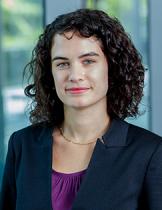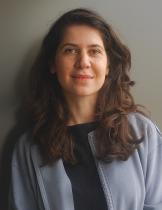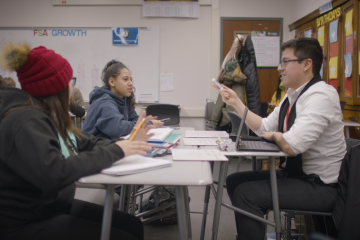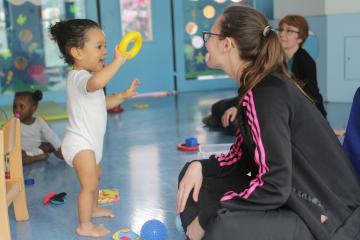
Q&A with affiliate Michela Carlana on an online tutoring program to address Covid-19-induced educational inequalities
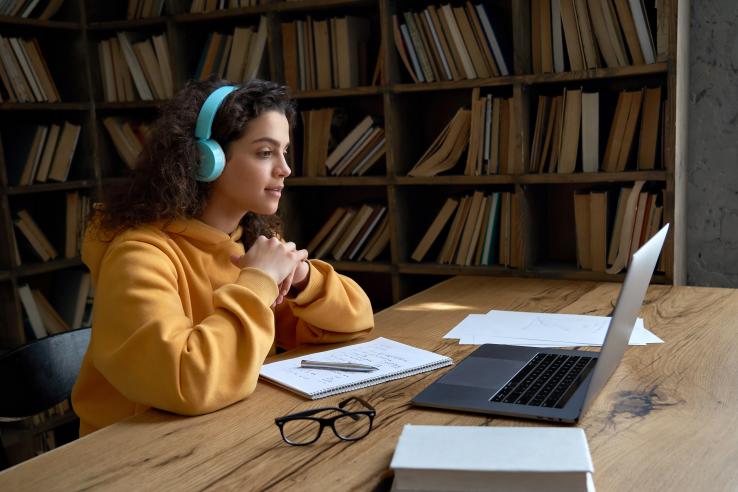
Millions of students across the world are falling behind as a result of school closures and unequal access to educational resources amid school closures linked to the Covid-19 pandemic. Tutoring programs may offer an effective and reliable method to improve students’ learning outcomes.
Tutoring can take many forms, but often consists of supplemental one-on-one or small group instruction sessions aimed at improving students’ academic performance. A review of 96 randomized evaluations of tutoring programs from high-income countries has pointed toward tutoring as “a proven and agreed upon strategy” for addressing learning losses and helping students catch up, and that has consistently led to large improvements in learning.
Following the shift to online instruction across Italian schools in March 2020, J-PAL affiliates Michela Carlana (Harvard University) and Eliana La Ferrara (Bocconi University) rapidly launched an online tutoring program to help students from disadvantaged backgrounds who were lagging behind during distance learning.
Within four weeks of the Italian government’s school closure announcement, the two researchers had developed the content of the program, reached out to schools in Italy to identify potential tutoring participants, recruited tutors, and obtained approval from an Ethics Committee to run the intervention. Two weeks later, the Tutoring Online Project (TOP) was launched.
TOP consists of free individual online tutoring provided by volunteer university students, trained and supported by pedagogical experts, and is aimed at middle school students from disadvantaged backgrounds. The program led to improved academic performance as well as improvements in socio-emotional skills, aspirations, and well-being. The impacts on learning were more pronounced for students from low income backgrounds and, in the case of well-being, for immigrant children.
That Carlana and La Ferrara were able to design and launch the TOP program so quickly was due to their extensive experience in conducting evaluations of educational interventions. Some of their previous research focused on programs seeking to promote equal access to education, including a tutoring and career counseling intervention for high-performing immigrant students from disadvantaged socioeconomic backgrounds in Italy, which closed the high school choice gap between participating native-born and immigrant boys.
We spoke with Michela Carlana to learn more about how the idea of the study came about, insights on initial results, and plans for evaluating and scaling—in Italy and beyond.
How did the idea of TOP come about and how did you come to implement it?
“During the first lockdown due to the Covid-19 pandemic, schools closed in most countries, with potential severe consequences on children’s learning and psychological well-being. In response to that, governments and foundations across the world mainly focused on addressing the issue of access to technology. This was an important step, but insufficient to tackle the deep challenges students were facing due to the isolation that affected not only their learning but also their psychological well-being.
My co-author Eliana La Ferrara and I decided to act, building on our previous experience with education interventions in Italian schools and leveraging the intrinsic motivation of university students to help disadvantaged children. In a couple of weeks of intense work, we designed the tutoring intervention and started the recruitment of schools and tutors.”
Where is TOP currently being adapted and scaled? How did discussions come about for expanding in these other countries?
“Shortly after the first presentations of the results from TOP in Italy, we were contacted by several researchers and policymakers interested in implementing the program in other countries. Each country has its own unique challenges, but there are substantial benefits from building upon what we have learned in the Italian context. We are currently piloting TOP in the Dominican Republic and we are having discussions with several other countries in Latin America to expand the program from fall 2021.”
How are lessons from this study influencing policy decisions?
“We are moving step-by-step to increase the scale of the program and partner with foundations that will help the implementation of TOP at scale in the future. During the school year 2021-22, we are planning to scale the intervention to 3,000 children in Italy and around 1,000 in the Dominican Republic. Hopefully, we will be able to offer the intervention to children in other countries as well.”
How does the TOP intervention fit into your broader research plans?
“In my research, I study constraints to equality of opportunities in education and focus on programs that may help mitigate the gaps. Stereotypes and cultural barriers are key obstacles I have been focusing on in my other work. TOP aims to provide a potential solution to the exacerbation of inequality during the Covid-19 pandemic.
There are few interventions in economics of education that have proven as effective as tutoring in boosting student achievement. I believe TOP is even more promising than standard in-person tutoring, as it relies on tutors with high intrinsic motivation, it has a low cost per pupil, and it allows us to reach disadvantaged children in areas further away from big cities where tutors are usually located.”
For more information about the TOP intervention and its results, read a working paper released earlier this year.
While evidence such as this has brought the focus on the high potential of tutoring to address some of the educational challenges and inequalities during the pandemic, more work remains to be done to understand how to support students reintegrate into the classroom as schools reopen following the pandemic.
